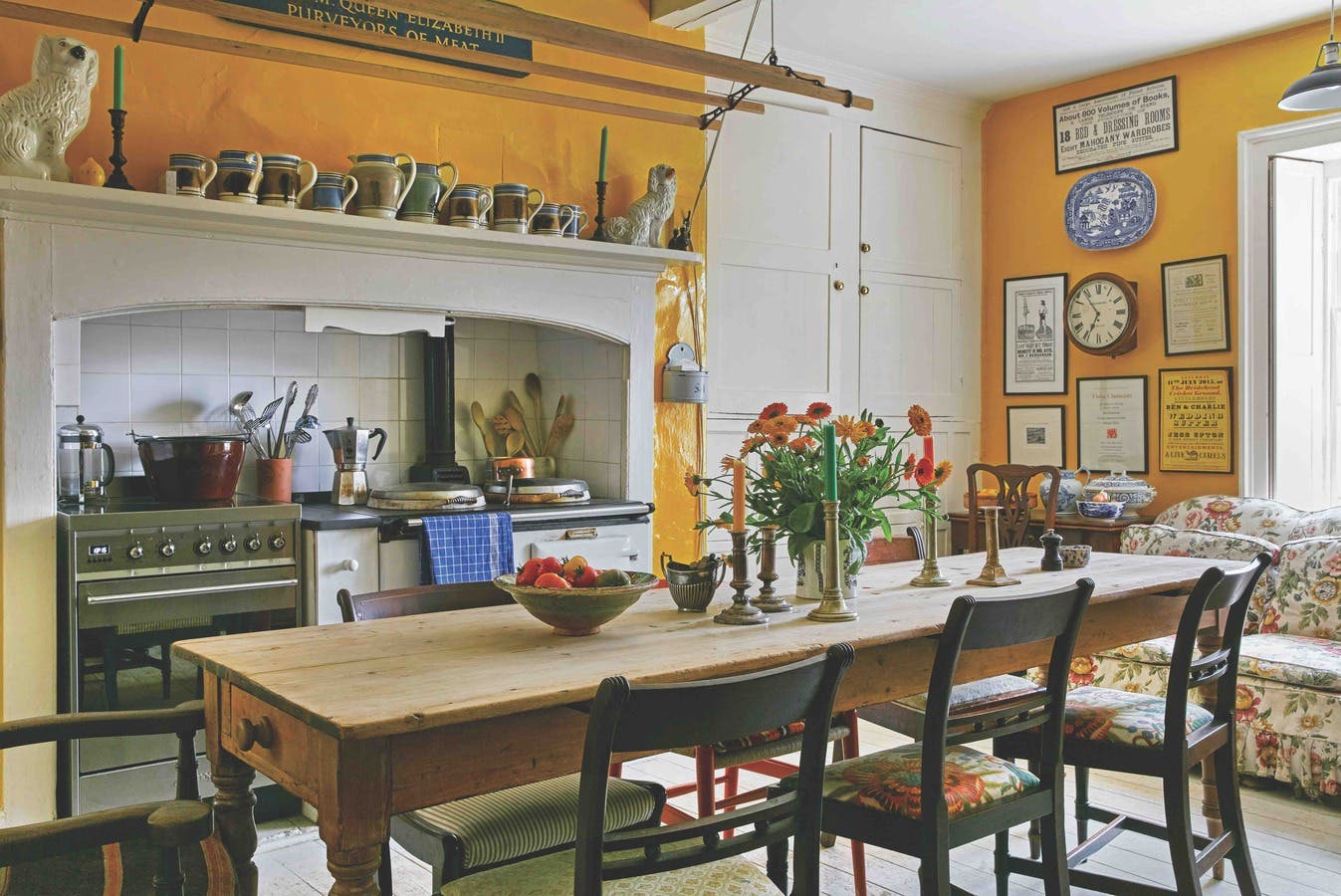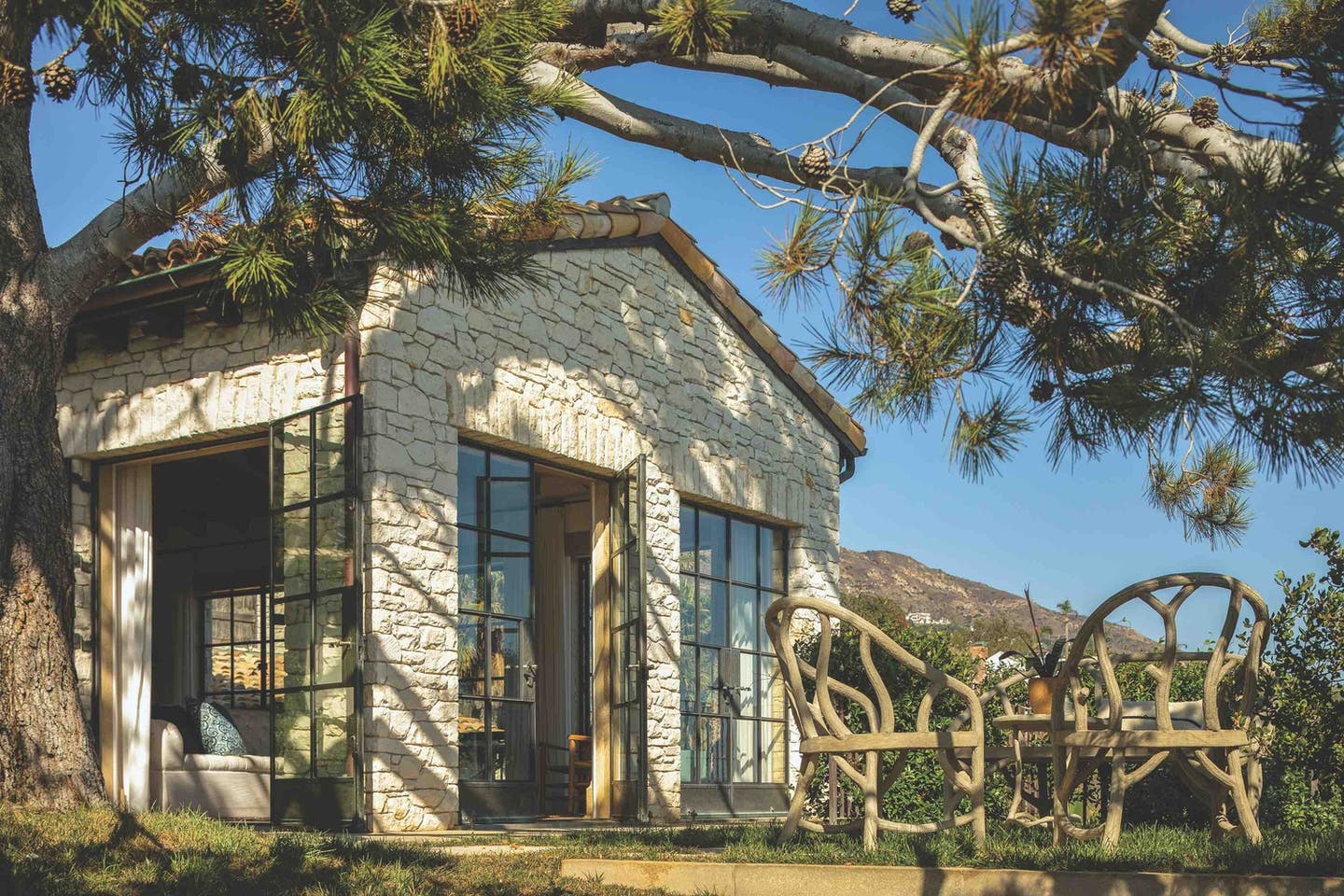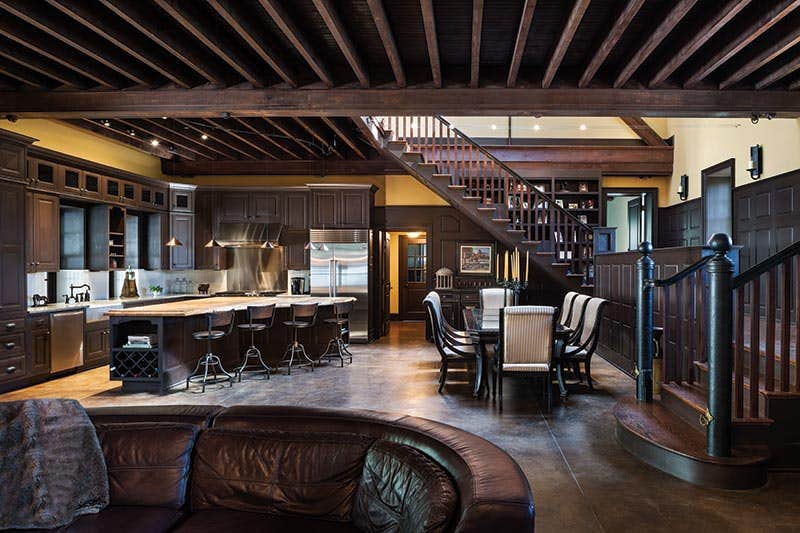
Restoration & Renovation
Restoring All Around Farm’s 19th-Century Carriage House
Project: All Around Farm, Gwynedd Valley, PA
Architect: Archer & Buchanan Architecture, Ltd., West Chester, PA; Richard Buchanan, AIA, partner
Contractor: E.C. Trethewey Building Contractors Inc., Downingtown, PA
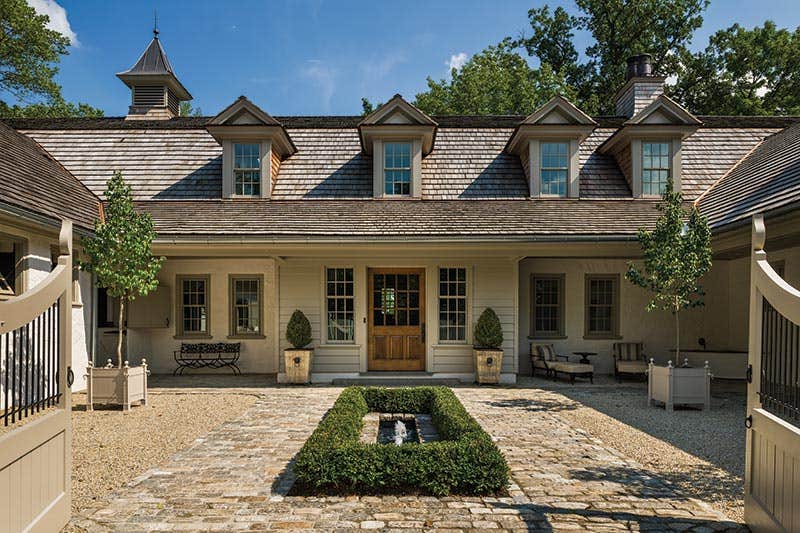
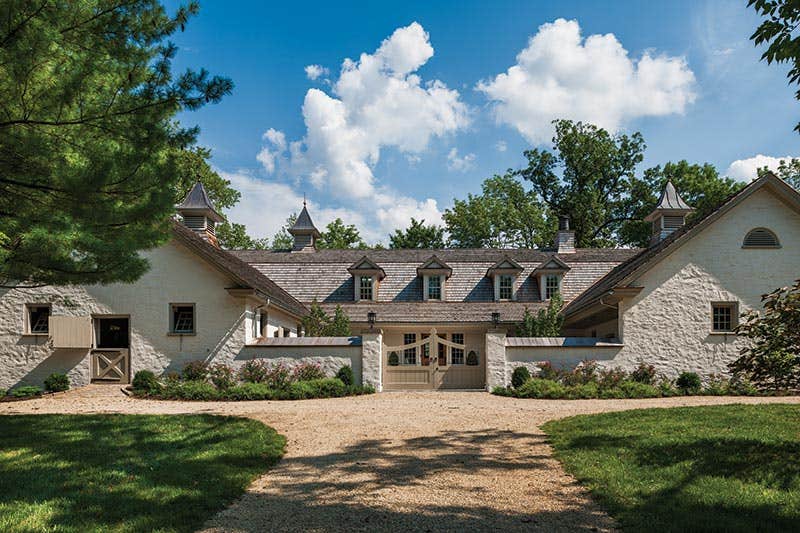
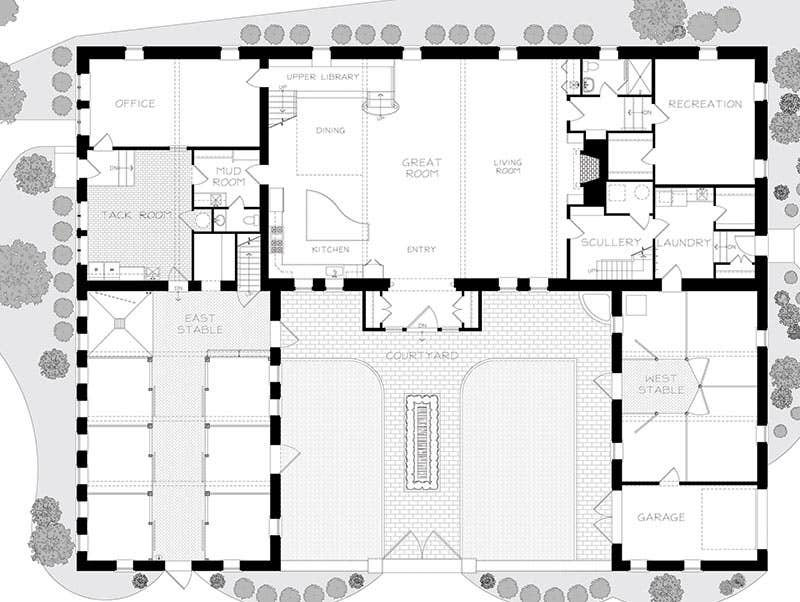
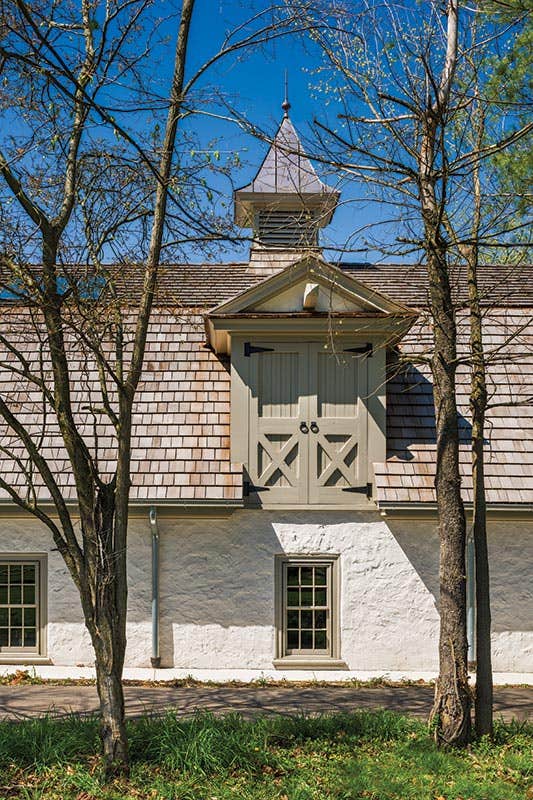

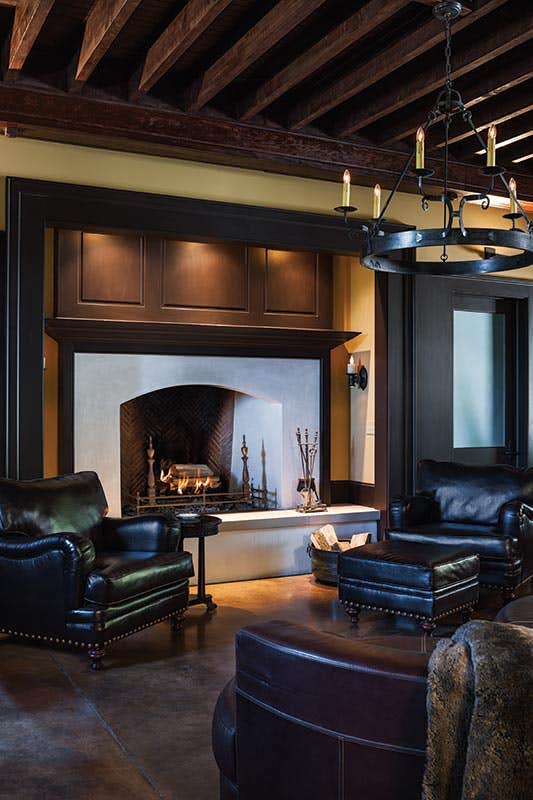
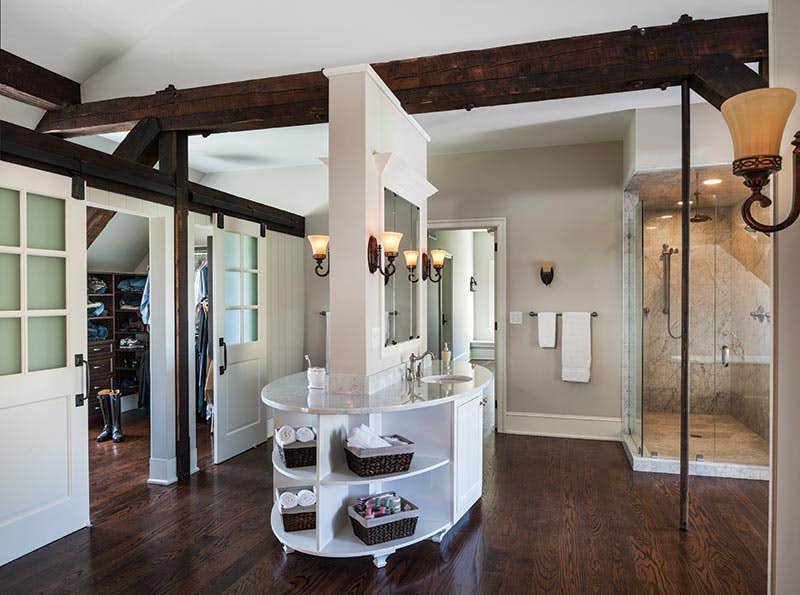
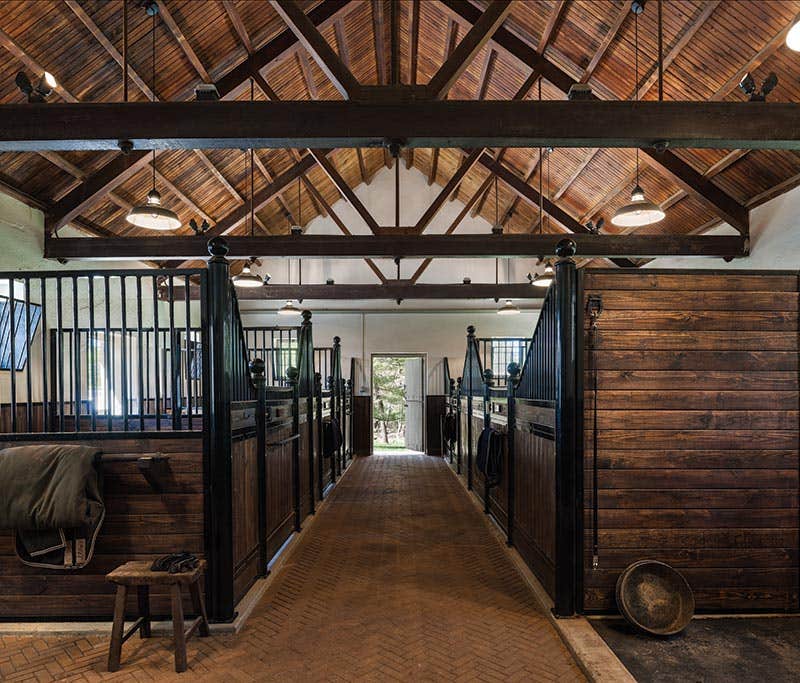
By Annabel Hsin
While foxhunting with his local pack three years ago, Richard Buchanan, AIA, partner at West Chester, PA-based Archer & Buchanan Architecture, Ltd., was approached by prospective clients regarding a barn they wished to purchase. Built ca. 1870, the barn was once the carriage house of a large summer estate in Gwynedd Valley, PA. It was repurposed as a car storage facility during World War II and in 1957, Milton (Junie) Kulp, Jr. made the farm into the internationally known show stables, All Around Farm.
The clients invited Buchanan to visit All Around Farm to evaluate its condition and found that while the barn had been neglected for years, it was structurally sound and full of potential. “This project was a delightful and unusual opportunity for us because the existing structure was extraordinarily well made,” says Buchanan. “All of the exterior walls are stone, the roof and floor structures are turn-of-the-century, heavy-timber construction with massive beams, enormous tie-rods and terrific hardware. As a result, there was very little need for us to impose new aesthetics. We simply restored and protected what existed and everything new is a response to what was already there.”
The design approach was to maintain the architectural integrity of the historic structure while adapting the building as a primary residence for the clients and their horses. “The clients are very playful in their attitude about the whole horse aspect,” says Buchanan. “Frankly, it’s about the whimsical fantasy of a girl and her husband living with her horses and that’s an important underlying theme. The project is obviously an extensive reconstruction of a valuable property in an important location but at the end of the day, it’s all about the homeowners enjoying their lives with their horses.”
After cleaning and repairing the stucco exterior, existing asphalt shingles were replaced with new jumbo taper-sawn cedar shingles to highlight the gambrel and pitched roofs. The heavy wood cornices, trim and window surrounds were either repaired or replaced with profiles matching the originals. Damaged stucco on the east and west ends of the barn was substituted with painted cedar siding for a more balanced appearance; the windows on these walls were moved to improve the interior planning. “There were also marvelous cupolas on top of the barn but they had low caps,” says Buchanan. “We introduced taller, pointed caps common to racing stables. It gave the building better symmetry and improved the weight of these elements in the overall composition.”
The courtyard features a rill bordered with boxwood and is landscaped simply with cobblestone and pebbled gravel to accommodate horses moving through the area. It is flanked by the restored horse stable wings and leads to a central formal entry. This is a glass enclosure extended forward of the original carriage house doors, to create a foyer that provides a sense of compression before stepping into the large volume of the great room. “The main volume was originally the carriage room that had been cut up into a very poor stable,” says Buchanan. “That big space now has an open kitchen, dining and seating areas. Despite a very high ceiling it was quite dark so we opened up one large segment for the main stair up and added a studio skylight to flood the space with daylight from above. Even though the interior has dark paint, woodwork and flooring, it’s a very sunny space.”
The focal point of the open kitchen is a large island with a curved antique chestnut top resembling a grand piano; it is juxtaposed with dark wood cabinets, marble counters and stainless-steel appliances. Adjacent to the kitchen, the dining area is opened to the skylight and is bounded by a raised podium and stairs leading to a library alcove and the second floor. The newel posts were fashioned out of salvaged iron stall posts.
In the living area at the other end of the room, the fireplace is placed within an alcove like a proscenium for a stage. “Given the size of the space, we had to think constantly about how to relate to a human scale for living in a room meant for an equestrian function,” says Buchanan. “We set the fireplace on a raised hearth in a cased opening alcove that mirrors the cased opening of the main entry. Within that setting there’s lighting, paneling and an antique mantel, which was found in the hayloft under piles of old hay. The mantle apparently came out of the original manor house and was stored in the barn. It was exciting to find because it gave us a scale and an artifact to work with in creating this focal point.”
The living spaces are unified with exposed ceiling beams, wood paneling that was CNC milled out of high-density fiberboard and a polished concrete floor with radiant heat, stained dark brown. Also on the first floor are an office, mudroom, tack room, a recreation room, powder room, laundry and scullery.
Upstairs, the master bedroom and bath occupy a large open loft space. A short hallway leads to the original steel stairs, two additional bedrooms and a bathroom. In contrast to the dark color palette of the great room, the second floor contains light-colored walls, casework and trim. White oak floors complement existing timber beams, which were kept dark to match those throughout the building.
“We began the design process by adding a concrete-block firewall separating hay storage from the residence, which satisfied building codes,” says Buchanan. “From a practical design standpoint, we wanted to be very sure that the odors of the stables didn’t make their way into the house. We positioned a mudroom off the kitchen that connects to the tack room, which is the cleanest and most civilized aspect of any barn. From there a vestibule leads to the stables. At no time is there an opened door for odors and flies to make their way into the house.”
Key manufacturers and suppliers for the project included Exton, PA-based Lighting By Design; Pella, IA-based Pella Windows & Doors (windows and exterior doors); Quarryville, PA-based Saner Architectural Millwork (interior doors and millwork); King of Prussia, PA-based Ferguson Bath & Kitchen Gallery (plumbing); Mt. Laurel, NJ-based Harmonson Stairs; and King of Prussia, PA-based West End Hardware.
“The clients were aware of our work in both residential and equestrian properties and this, in many ways, is the perfect project because it’s a combination of people, horses and an old setting,” says Buchanan. “They did a great job in trusting the builder and architect to produce the best possible outcome and were rewarded for their trust. This was a really wonderful opportunity for us to explore and push the boundaries of what can be done.”



